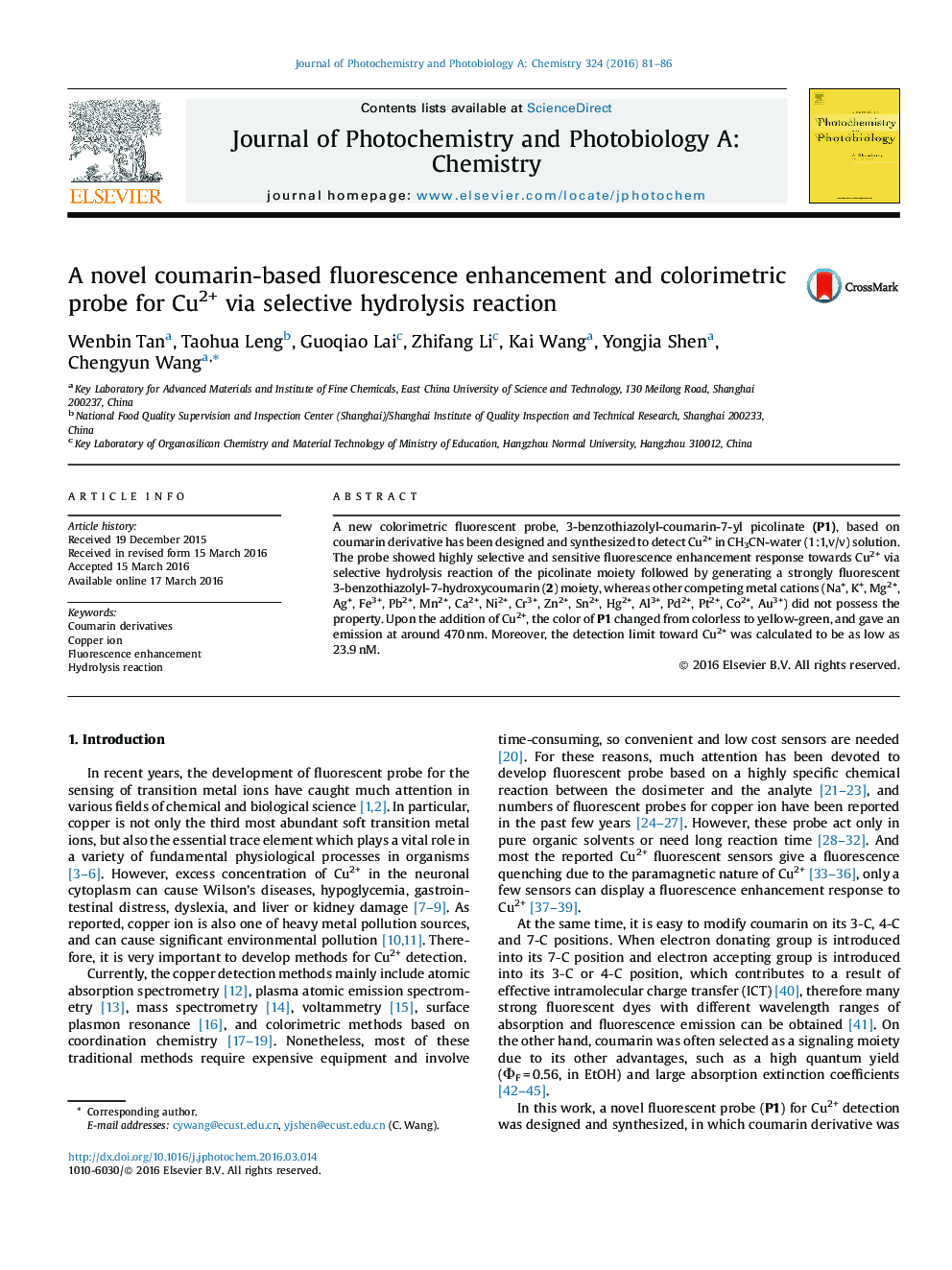| Article ID | Journal | Published Year | Pages | File Type |
|---|---|---|---|---|
| 26057 | Journal of Photochemistry and Photobiology A: Chemistry | 2016 | 6 Pages |
•A new coumarin-based fluorescence probe was synthesized for the first time.•The probe showed highly selective and sensitive responses to Cu2+ in aqueous media.•The detection limit toward Cu2+ was calculated to be as low as 23.9 nM.
A new colorimetric fluorescent probe, 3-benzothiazolyl-coumarin-7-yl picolinate (P1), based on coumarin derivative has been designed and synthesized to detect Cu2+ in CH3CN-water (1:1,v/v) solution. The probe showed highly selective and sensitive fluorescence enhancement response towards Cu2+ via selective hydrolysis reaction of the picolinate moiety followed by generating a strongly fluorescent 3-benzothiazolyl-7-hydroxycoumarin (2) moiety, whereas other competing metal cations (Na+, K+, Mg2+, Ag+, Fe3+, Pb2+, Mn2+, Ca2+, Ni2+, Cr3+, Zn2+, Sn2+, Hg2+, Al3+, Pd2+, Pt2+, Co2+, Au3+) did not possess the property. Upon the addition of Cu2+, the color of P1 changed from colorless to yellow-green, and gave an emission at around 470 nm. Moreover, the detection limit toward Cu2+ was calculated to be as low as 23.9 nM.
Graphical abstractA new coumarin-based fluorescence enhancement probe was designed and synthesized, for highly selective and sensitive detection of Cu2+ based on the hydrolysis reaction in CH3CN-water (1:1,v/v) solution. The detection limit toward Cu2+ is calculated to be as low as 23.9 nM.Figure optionsDownload full-size imageDownload as PowerPoint slide
